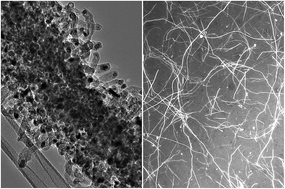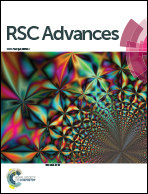Molybdenum carbide nanowires: facile synthesis, a new hybrid phase and their use as transparent electrodes
Abstract
Several synthetic routes exist for the production of bulk molybdenum carbides whereas production of larger quantities of different molybdenum carbide phases in the form of nanowires and nanowire networks is still challenging. Here we report a novel route for synthesis of molybdenum carbide nanowires by carburisation of Mo6S2I8 nanowire bundles. Gram quantities of molybdenum carbide nanowires composed of mainly MoC and Mo2C phases were obtained and further reduced to single phase Mo2C nanowires. By controlling the reaction conditions during the transformation, we can modify the ratio between MoC and Mo2C phases in nanowires and produce a novel hybrid inorganic/organic nanomaterial that we identified as molybdenum carbide nanowires densely covered with carbon nanofibres. We used the same approach on nanowire networks and demonstrate a new use of molybdenum carbide in the form of nanowire networks as transparent electrodes. The sheet resistance of such robust and air-stable electrodes is around 1050 Ω sq−1 at room temperature and their transmittance between 93% and 95% in the range of 200–900 nm. The electrodes are thus suitable for electro-optic applications, especially where high transparency in the UV region is required.


 Please wait while we load your content...
Please wait while we load your content...